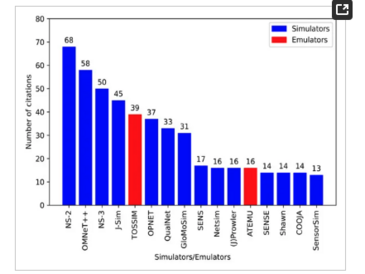Sadiq Idris, Thenuka Karunathilake, Anna Förster
Sensors 22 (2022): 5546
doi: 10.3390/s22155546
The Internet of Things (IoT) is one of the most important emerging technologies, spanning a myriad of possible applications, especially with the increasing number and variety of connected devices. Several network simulation tools have been developed with widely varying focuses and used in many research fields. Thus, it is critical to simulate the work of such systems and applications before actual deployment. This paper explores the landscape of available IoT and wireless sensor networks (WSNs) simulators and compares their performance using the Low Power Wide Area Network (LPWAN) communication technology called LoRa (Long Range), which has recently gained a lot of interest. Using a systematic approach, we present a chronological survey of available IoT and WSNs simulation tools. With this, we categorized and content-analyzed published scientific papers in the IoT and WSNs simulation tools research domain by highlighting the simulation tools, study type, scope of study and performance measures of the studies. Next, we present an overview of LoRa/LoRaWAN technology by considering its architecture, transmission parameters, device classes and available simulation tools. Furthermore, we discussed three popular open-source simulation tools/frameworks, namely, NS-3, OMNeT++ (FLoRa) and LoRaSim, for the simulation of LoRa/LoRaWAN networks. Finally, we evaluate their performance in terms of Packet Delivery Ratio (PDR), CPU utilization, memory usage, execution time and the number of collisions.
© 2022, The Authors, CC BY 4.0

